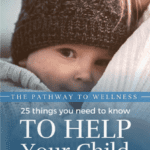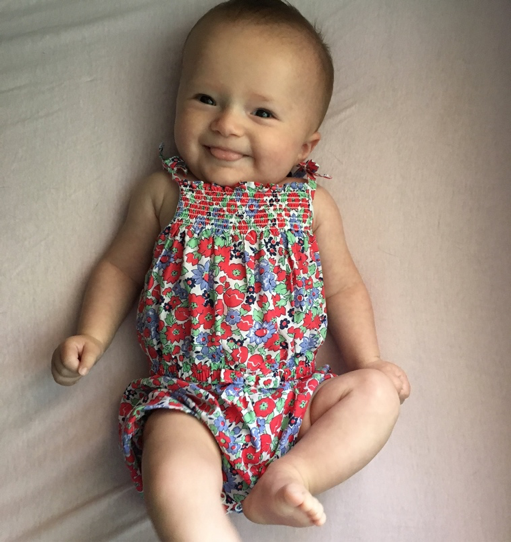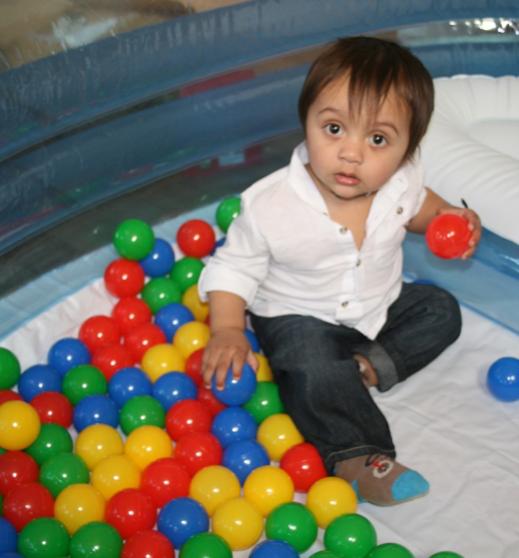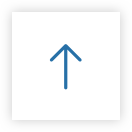Results in Brain-Injured Children: Reading Victories
Results: The only thing that matters in the world of hurt kids
In the world of brain-injured children reading is a vital issue. When the world sees a hurt child it often decides his fate based upon the assumption that he is not intelligent. Once he is assigned this lower condition, he is seen as less deserving and less worthwhile. How else can we explain the places where hurt kids are routinely warehoused, medicated and forgotten? The children included here had significant problems in the visual pathway that could have put them at risk and ruined their lives. Parents, and stimulation, as always, were the answer. If a hurt child can read he can learn about the world and demonstrate to that world that he is highly intelligent.
At birth a newborn baby is blind: the baby has a light reflex. This is the first stage of beginning to see.

A newborn baby needs strong contrast: White dots on a black background provides appropriate visual contrast.
As the baby matures, the baby begins to see outline. This is the second stage of visual development. When a baby begins to be able to see detail this means the baby is beginning to have useful vision.
Injury to the brain either before, during or after delivery can result in poor or inconsistent vision. This is because of injury to the visual pathway, not injury to the eye.

After stimulation the same baby only weeks later is ready to see detail within a configuration- “Zebra”.
Appropriate stimulation and opportunity are the answer when a sensory pathway is in trouble. When the visual pathway is provided with stimulation with increased frequency, intensity and duration in recognition of the orderly way in which the brain develops, the visual pathway will grow. The child will begin to see the world around him and differentiate detail the child can actually begin the process of learning to read. The young child begins with single words, then couplets, then sentences. When a child can consistently differentiate single words and couplets he has begun on the reading pathway and he receives a reading victory.
Rose
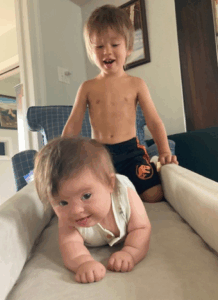
Rose was diagnosed with Trisomy 21 at birth. Soon afterwards a friend told her parents about the book How Smart Is Your Baby? Parents began to use what they learned from reading the book. When Rose was two months old, Mother attended The Newborn Course to learn the best ways to stimulate Rose and provide the effective opportunity for her early development. To stimulate Rose’s vision, Mother began a careful program of visual stimulation that led to an early reading program. By age 7 months, Rose loved her reading words. She also started crawling all over the house. Rose’s parents attended the What to Do About Your Brain-Injured Child course just after Rose’s first birthday. At 21 months of age, Rose had her first appointment at The Institutes. She was reading words and sentences, and picking up her favorite books to read, too, ones about animals, especially dogs. She received a reading victory at that time.

Rose has begun to say her first words, she is now healthy, and beyond her peers both physically and intellectually. Her mother writes “I thank that wonderful family who introduced us to The Institutes and gave us the book “How to Teach Your Baby to Read”.
Wyatt
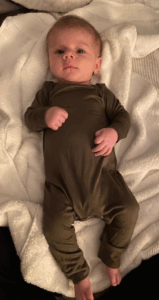
After a difficult pregnancy, Wyatt was delivered by cesarean section. He was a lethargic baby and had difficulty feeding. After vaccinations at 4 and 6 months, Wyatt stopped making sounds and began having staring spells. He had his first seizure at 7 months, and parents felt the medication delayed his development further. At eleven months, Wyatt was diagnosed with cortical visual impairment. By age 17 months Wyatt’s vision was still poor, but the bigger concern was he did not demonstrate any understanding of single words. He was immobile and could not use his hands. His parents attended the What to Do About Your Brain-Injured Child course and began a home treatment program. At his first appointment a year later, Wyatt was recognizing familiar faces from across the room, he was understanding at his age level and beginning to move.

Today, Wyatt is four years of age, he is reading more than a hundred words and saying his first words as well. He has received a reading victory. He is getting up on his hands and knees now, and he is no longer on anticonvulsant medication.
Timothy

After a normal pregnancy, Timothy met all the expected milestones until he was 14 months of age. Following multiple vaccinations on the same day, his parents noticed that he stopped having normal eye contact, his vocalizations stopped, and he became less interested in others. He began banging his head, and by two years of age he was diagnosed as autistic. After several years in special education classes, Timothy, at fourteen years of age, was not reading or writing. He often screamed and shouted and had only a few words of speech. His understanding was below his age level, he was hyperactive and hypersensitive to sounds and touch. It was not until he was 14 years old that his parents discovered the What to Do About Your Brain-Injured Child course, and he began a home treatment program. Timothy had his first visit to The Institutes soon after. At his second visit, at age 15, he was reading library books, had favorite authors and especially liked books about travel. He was awarded a reading victory. He was also following directions and listening attentively and no longer disturbed by or disruptive in crowds. He began taking responsibility for his own treatment program. His understanding is now equal to his age level.
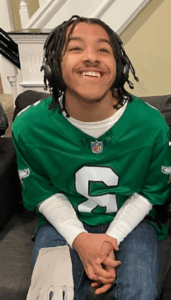
We all like to think that babies arrive with an equal opportunity to develop and grow but this is not true for brain-injured children. Each of these children had significant visual problems that could have made their lives a tragedy. But their parents used their energy and their understanding of how the brain grows and develops to provide stimulation and opportunity to give their children a chance, not only to catch up to their peers, but to surpass them.
Otto
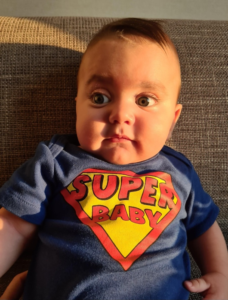
Otto was delivered by c-section, two months prematurely. He spent one month in neonatal intensive care, having seizures and was placed on anti-convulsant medication. He was diagnosed with periventricular leukomalacia and epilepsy. At age 30 months, his parents attended the “What To Do About Your Brain-injured Child” course and began a home treatment program. At that time, Otto was functionally blind, had limited understanding, and was immobile.
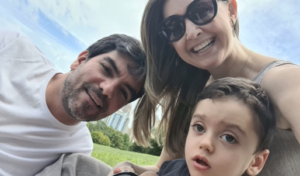
Two months later, Otto was able to crawl for the first time. By his third birthday, anti-convulsant medication was safely removed, and Otto had begun to read his words, couplets and phrases and received a reading victory. By age 4, Otto was reading books at first to second grade level. His understanding was at age level.
Larissa
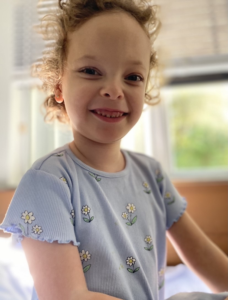
Larissa was delivered by emergency c-section as her heart rate was decelerating. At two months of age, she was diagnosed with a congenital abnormality, a microdeletion. As a toddler, she required cardiac surgery. When she was four years old, her parents attended the What to Do About Your Brain-Injured Child course and began a home treatment program. At this time, Larissa was not able to move, her health was poor, and she understood only a few words. She was very sensitive to light and she had to use sunglasses when outside. She had no ability to use her two eyes together she used one eye at a time. By age 5, Larissa was creeping on her hands and knees, and pulling herself up on furniture to cruise. Her health had significantly improved and she was sleeping well. She followed many instructions, and she had begun to read.
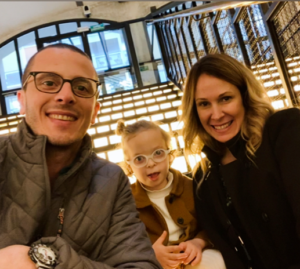
At six years of age, Larissa was picking up books spontaneously to read, she was standing up independently, and walking under an overhead ladder, eager to walk rather than creep any longer. Smart girl, and tough one, too!
Jeronimo
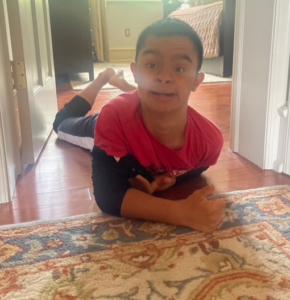
At birth, Jeronimo was transferred to neo-natal intensive care for feeding and oxygen supplementation. He was diagnosed with Trisomy 21, and after discharge, continued supplemental oxygen at home. At two years of age, Jeronimo underwent cardiac surgery. For the first three years of his life, Jeronimo had many rounds of antibiotics, and his overall development was slow. When Jeronimo was 14 years old, his parents attended the What to Do About Your Brain-Injured Child course. At that time, Jeronimo was at a six-year-old level in some areas and below in others. His ability to use both eyes together was poor. He was not yet reading or writing, he had hearing problems, and he spoke mostly using single words. Following the course, Jeronimo and his parents got to work and began a home treatment program.
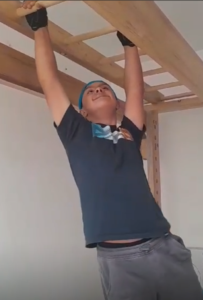
In less than a year, at Jeronimo’s second visit to The Institutes, his hearing had improved, he was understanding everything in his daily life. He was speaking in sentences, and he was reading books for the first time in his life. He also began to write. He had become independent in caring for himself, he was able to run 2 km non-stop. Jeronimo proves it is never too late to provide stimulation and opportunity to help the brain grow and develop.
We all like to think that babies arrive with an equal opportunity to develop and grow but this is not true for brain-injured children. Each of these children began their lives with significant visual problems that could have made it impossible to ever read or write. But their parents used their energy and their understanding of how the brain grows and develops to provide stimulation and opportunity to give their children a chance, not only to catch up to their peers, but sometimes to surpass them.
Diego

Diego was born by emergency c-section a month early. At birth, his cry was delayed, and he was incubated, he had a generalized cytomegaloviral infection and was given antibiotics.
Diego developed slowly, he was diagnosed with sensory neural hearing loss, and deafness. By age four, he could only take a few steps. At six years, he was diagnosed as autistic and started having seizures.
At ten years of age, Diego was unable to stand up by himself and although he could walk a few steps he preferred to lay down. He was completely deaf, he had no depth perception, and he did not feel pain. His parents described him as hyperactive and unpredictable.
Shortly after Diego’s tenth birthday, his parents attended the What to Do About Your Brain-Injured Child course. They created a home program based on what they had learned.

What a difference a year can make! Even at ten years of age, it was not too late for Diego to improve significantly. By age 11, Diego was no longer deaf and he could walk. He was hearing and understanding sentences, he enjoyed reading about animals, and he had begun to write. He was walking long distances and running more than 2 km. and because of his healthy diet, Diego was much calmer, and had been completely healthy for many months. He was responsible to do his home program every day – he worked very hard. He is a new boy, a much happier one, with a busy agenda for the next year!
Amelia

After a difficult pregnancy, labor was induced. Amelia was developmentally delayed in all areas, especially her speech. She began therapy. By six years of age, Amelia was significantly behind other children her age, she could recognize pictures but not letters or numbers. She lived in a bilingual household but did not understand either language well. She ran poorly and had a limited speaking vocabulary. She was very sensitive to sounds and she was not safe outside. Amelia’s parents attended the What to Do About Your Brain- Injured Child course and began a program with her at home.

By age 8, Amelia is now understanding above her age level, in both English and Mongolian. She chooses library books at a ten-year-old level, with her favorite subjects, biology and world history. She is no longer hyperactive or distracted and can handle sounds normally. She is running perfectly, hopping, and has started gymnastics. She is learning to write and type and can now express herself with confidence and clarity.
Ana

Ana was born prematurely by caesarean section due to fetal distress. Because of poor suction she was incubated. She was diagnosed with Trisomy 21, and Mother was ready to begin stimulating her and providing opportunity after reading the book, How Smart Is Your Baby. Mother writes “We have stimulated Ana since day one, and at two months of age, she had reached milestones even earlier than well babies, the doctors are impressed. She sees and hears well, she is active with good muscle tone, and has a strong kick!” After attending the What to Do About Your Brain Injured Child course, mother had even more information to expand to Ana’s home program. Just before her first birthday, Ana said her first word, she already loved reading, she could not get enough of her books. She loved learning and recognized the flags of many countries. At eighteen months of age, Ana was reading sentences, and following two step directions. She was pulling herself up to cruise, singing songs, and she was well behaved. Now she is very curious and wants to learn about everything!

Ekam

Ekam, was born in the United States. At five months old, he experienced high fever caused by bacterial meningitis which caused acute infarcts, and thrombosis of the brain. His parents attended the What To Do About Your Brain-injured Child course just before Ekam’s first birthday. Seven months later at his second visit, Ekam, age 19 months, earned a reading victory. His Mother taught him 750 words, 360 sentences, and he read 25 large print books in both English and Punjabi since Ekam is bilingual.
Sara

Sara is from Argentina. She was diagnosed with global developmental delay and hypotonia. She had difficulty breathing, eating and digesting so was operated twice to open her respiratory pathways. Parents attended the What To Do About Your brain-injured Child course when Sara was 27 months old. She had her visit at that time. After eight months of home program, Sara and her family returned to The Institutes. By that time, Sara had been taught more than 600 words, 380 phrases, and she had read 9 large print books. At her reading evaluation she scored 100%. She also received understanding and crawling victories at that visit.
We all like to think that we arrive with an equal opportunity to develop and grow but this is not true for brain-injured children. Each of these children began their lives with significant visual problems that could have made their lives a tragedy. But their parents used their energy and their understanding of how the brain grows and develops to provide stimulation and opportunity to give their children a chance not only to catch up to their peers but often to surpass them.
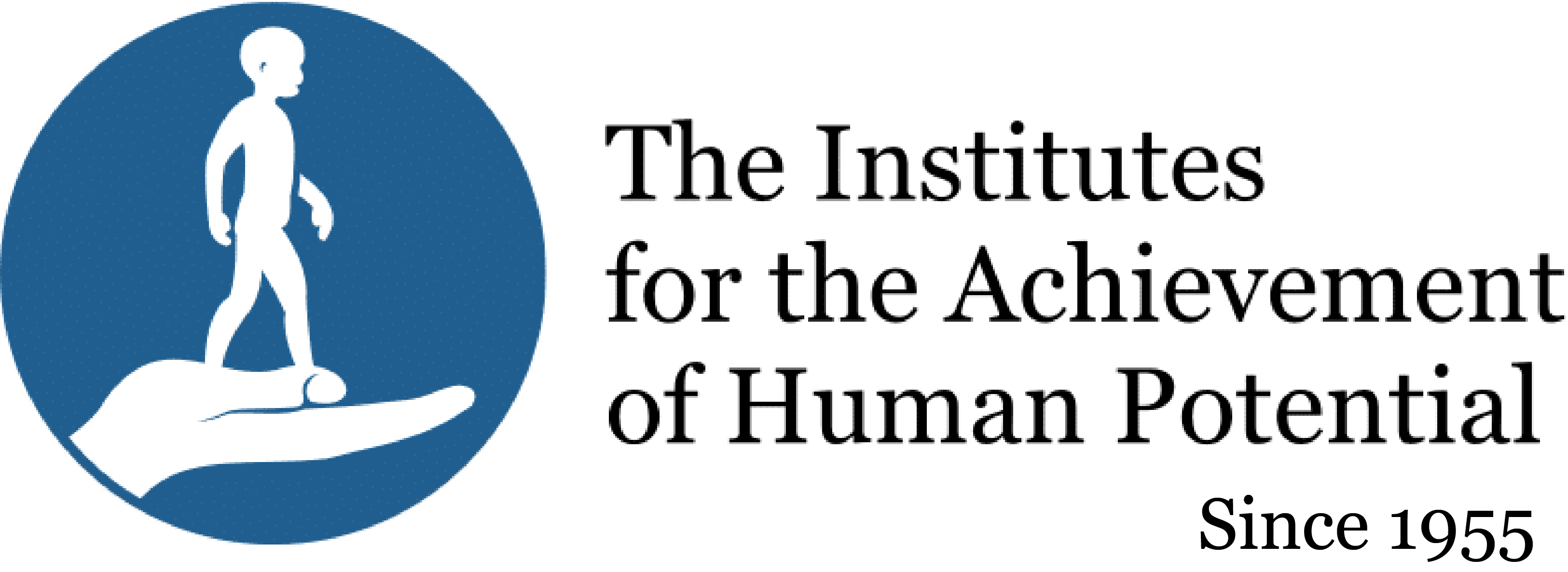
 Donate
Donate


